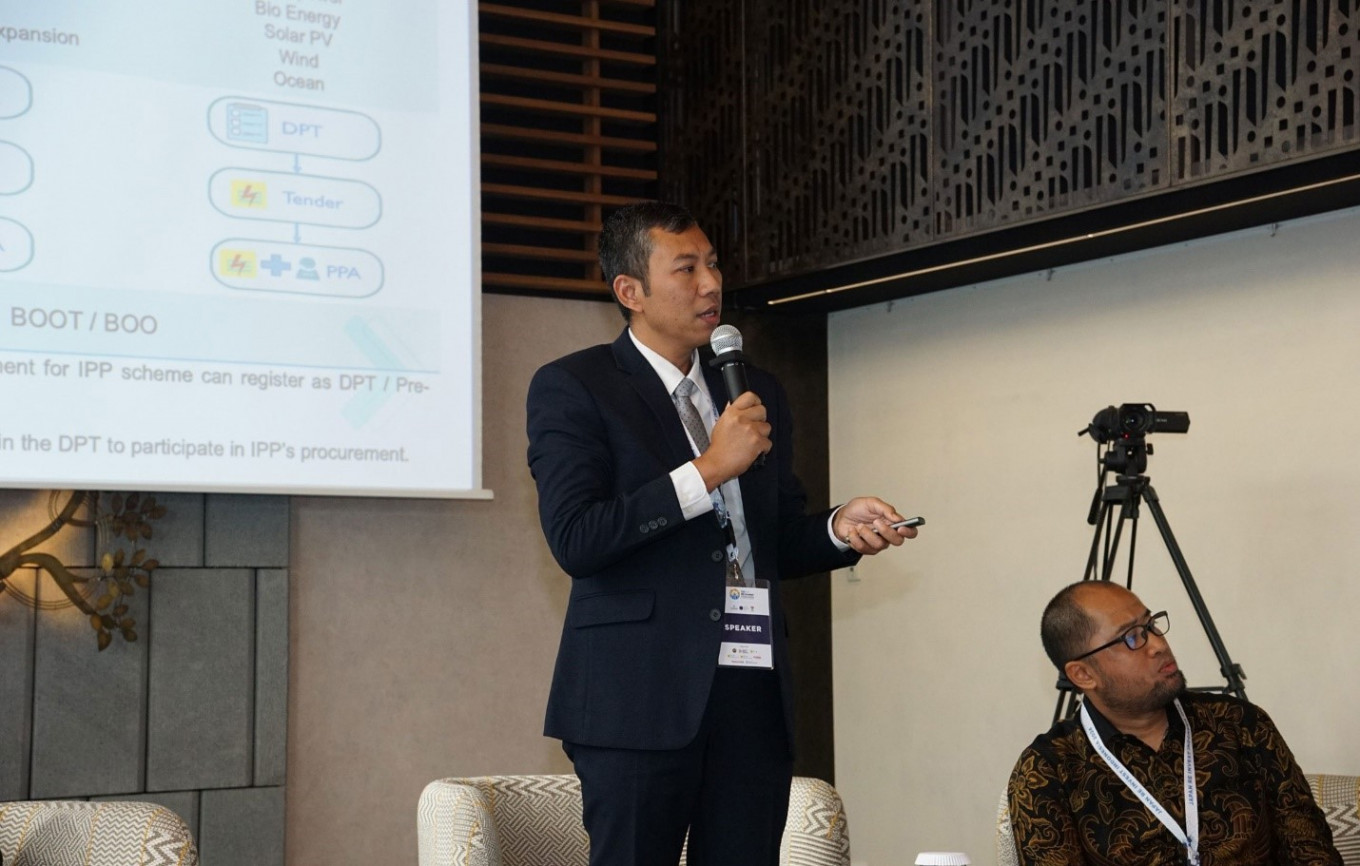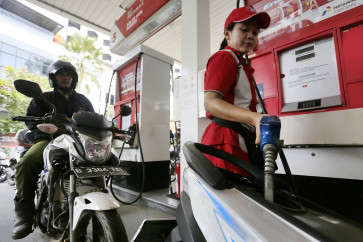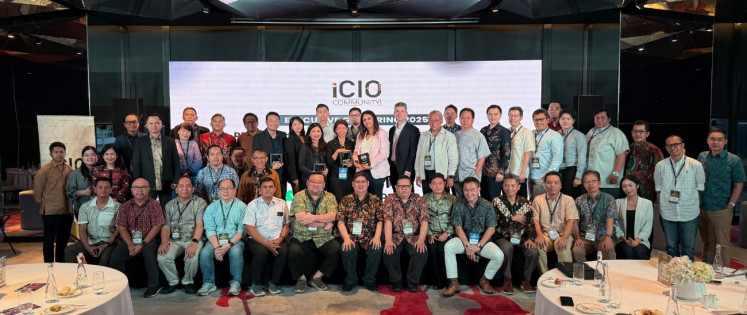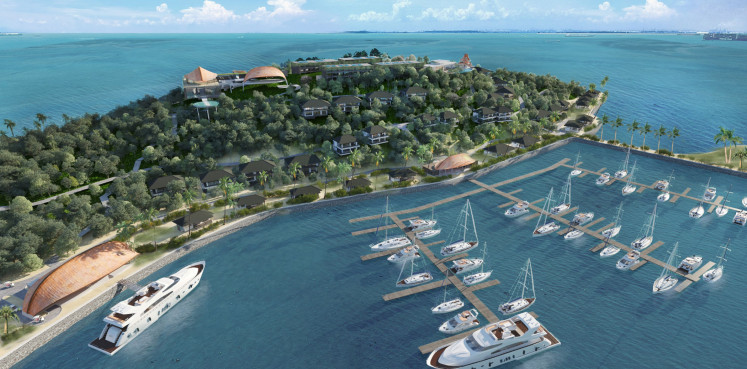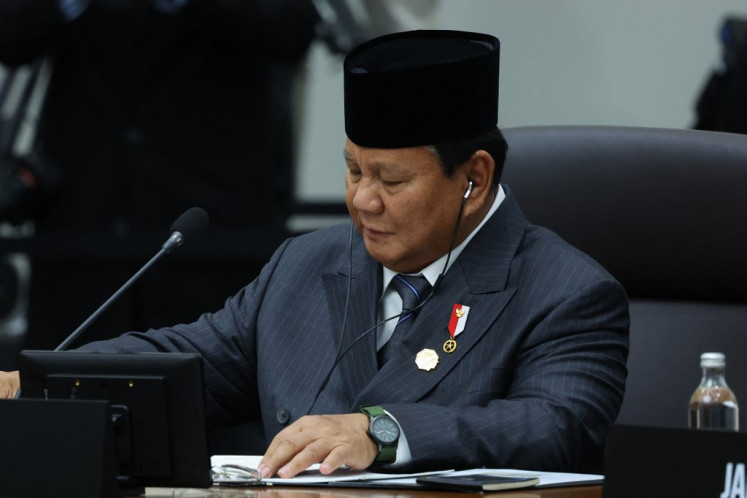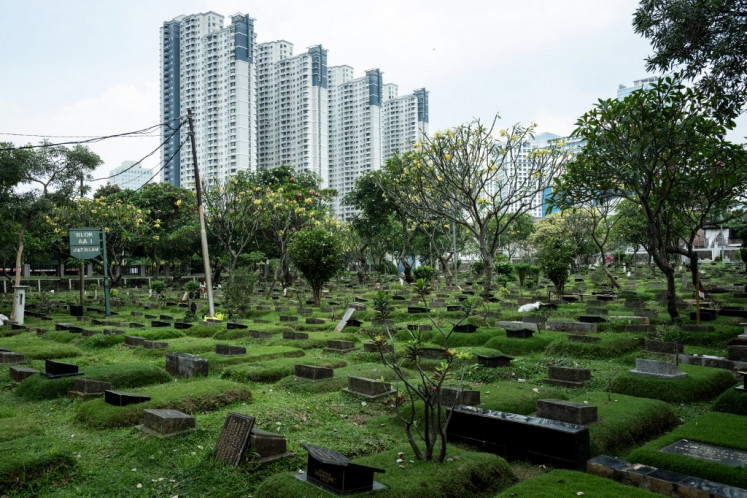Popular Reads
Top Results
Can't find what you're looking for?
View all search resultsPopular Reads
Top Results
Can't find what you're looking for?
View all search resultsPLN showcases renewable energy vision at Japan RE Invest 2024
Change text size
Gift Premium Articles
to Anyone
S
tate electricity provider PT PLN highlighted its progress in renewable energy development during Japan RE Invest Indonesia 2024 and offered international collaboration with Japanese investors and financiers to finance Indonesia’s energy transition to achieve Indonesia’s net-zero emissions target by 2060 or sooner.
Speaking at the renewable energy investment forum in Tokyo last week, PT PLN hydro energy vice president Hendro Prasetyawan elaborated on PLN’s role in the energy transition, especially in the electricity sector, by driving renewable energy development.
“Indonesia has [much] potential, around 3,686 gigawatts [GW], and now the utilization is somewhere around 8 to 9 GW, so PLN has many potential [forms of energy] to develop for the next few years,” Hendro told a packed audience at the Indonesian embassy compound in Tokyo.
Hendro emphasized Indonesia’s substantial renewable energy project potential, particularly in regions such as Sumatra, Kalimantan, Java and Papua. This potential, estimated at 84.4 GW, includes 28.9 GW from hydro, 18.1 GW from geothermal, 17.6 GW from wind, 19.7 GW from solar and 0.4 GW from bioenergy.
Distributed across all provinces, these resources offer a significant opportunity to diversify Indonesia’s energy mix, currently still dominated by fossil fuels, accounting for approximately 70 percent of the total.
Building on this immense renewable energy potential, PLN is actively driving the transition toward cleaner energy solutions in alignment with the government’s ambitious target of achieving net-zero emissions (NZE) by 2060.
PLN outlined its ambitious development plans in the 2021-2030 electricity procurement plan (RUPTL). Over this period, PLN aims to add approximately 40.6 GW of capacity, 51.6 percent (20.9 GW) from renewable energy and 48.4 percent (19 GW) sourced from thermal power plants.
Out of the 20.9 GW of renewable energy to be developed until 2030, 10.4 GW are to come from hydropower, 3.4 GW from geothermal sources, 4.7 GW from solar power plants and 2.5 GW from other sources such as biomass. This reflects PLN’s commitment to transitioning toward a greener energy portfolio while ensuring the resilience and accessibility of energy supply across Indonesia's diverse regions.
In the near term, PLN and independent power producers (IPP) plan to develop 4 GW of renewable energy capacity, including 3 GW from hydropower, 0.8 from geothermal and 0.25 from solar energy.
PLN's 3 GW of hydropower initiatives include 6 IPP projects with a total capacity of 1.8 GW and PLN-owned hydro power plants totalling 1.2 GW. These IPP projects are spread across key locations in Sumatra with two units of 400 megawatts (MW), one of 305 MW and one of 250 MW, and in Kalimantan with one of 300 MW and another of 200 MW.
The 800 MW of geothermal energy projects in the pipeline include three IPP projects contributing 430 MW. They are the Tuluhe project with 20 MW of capacity; the Ulumbu 5 and 6 projects with 40 MW; the Mataloko 2 and 3 projects with 20 MW; and the Sungai Penuh, Songa Wayaua and Atadei projects, each with 10 MW capacity; the Kepahiang project with 110 MW, the Ungaran project with 55 MW, the Tangkuban Perahu project with 40 MW, and the Kotamobagu project with 80 MW.
On the solar energy front, Hendro discussed PLN’s focus on PV projects, with three IPP-led projects totalling 250 MW. These include two Banten Solar PV projects of 50 MW and 100 MW and West Java Solar PV (100 MW), strategically positioned to harness the country's abundant solar resources.
As the country is currently still relying on fossil fuels to provide its electricity, PLN will need to build more and more renewable energy in the years to come to help achieve the government’s NZE target by 2060. In the next RUPTL, Hendro revealed, PLN would need renewable capacity three times bigger than in the 2021-2030 RUPTL.
“In this current [2021-2030] RUPTL, we will develop 20.9 GW of renewable energy, and in the next RUPTL, by the end of 2040, we will develop renewable energy of 61.5 GW,” said Hendro.
As Indonesia’s primary electricity provider, PLN currently serves approximately 90 million customers, powering a nation of 275 million people. Last year, the company had annual revenue exceeding Rp 488 trillion. This success is supported by PLN’s robust infrastructure, which includes more than 72 GW of capacity distributed across a vast 71,000-kilometer power grid.
The need to invest in Indonesia’s energy security, especially in the electricity sector, will continue to increase, and therefore, PLN will need more investors to invest in its energy transition.
Over 600 companies have registered and passed PLN’s selection process to be included on its list of selected providers, including those from Japan. During the Japan RE Invest 2024, Hendro invited more Japanese investors and financiers to invest in Indonesia’s energy transition by building more renewable energy.
RE Invest is an investment forum on a multi-stakeholder platform established by Tenggara Strategics in cooperation with the Centre for Strategic and International Studies (CSIS) to engage international investors for Indonesia’s renewable energy projects. This year, editions of the RE Invest forum were held in Japan, China and Indonesia.

